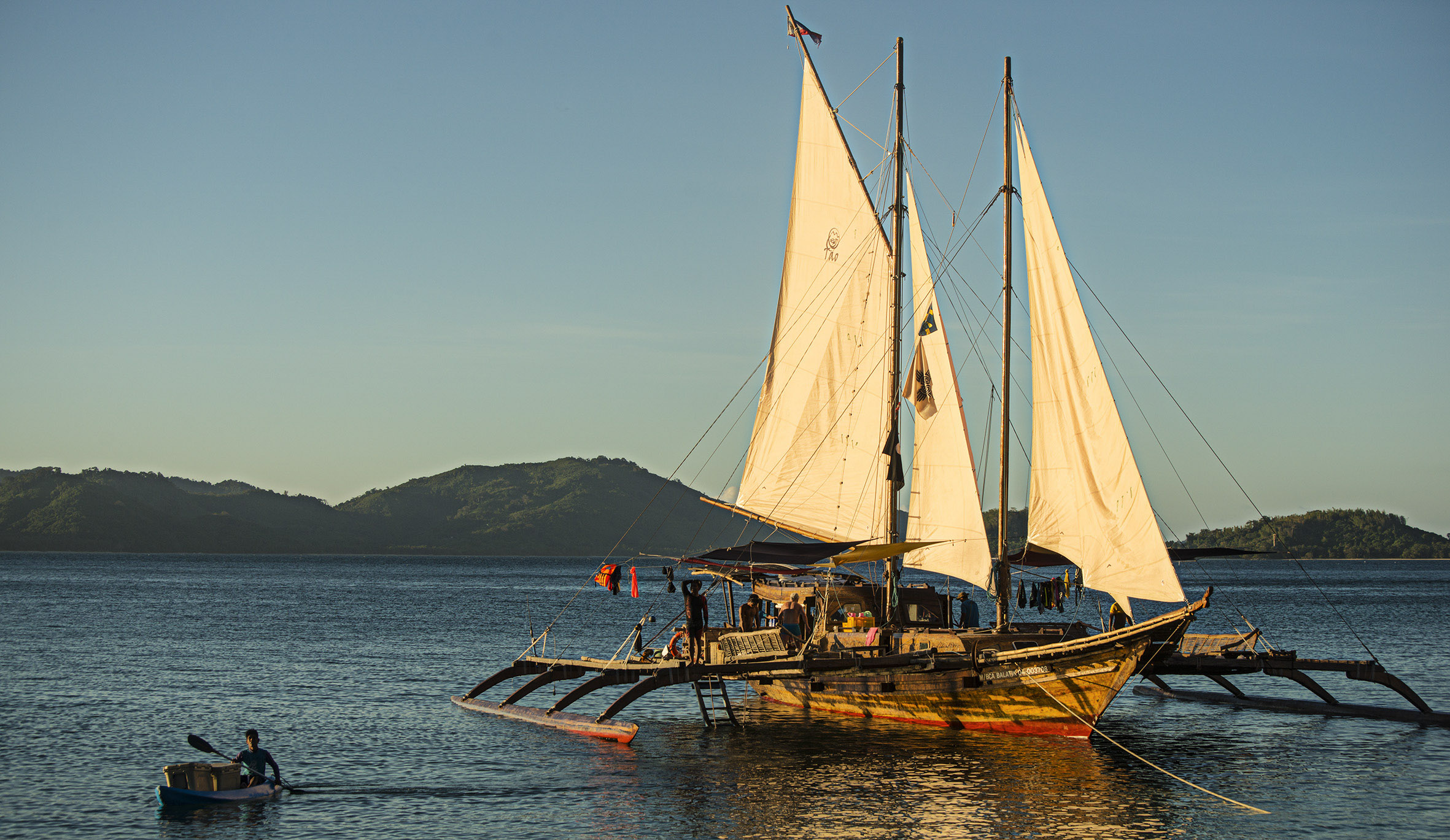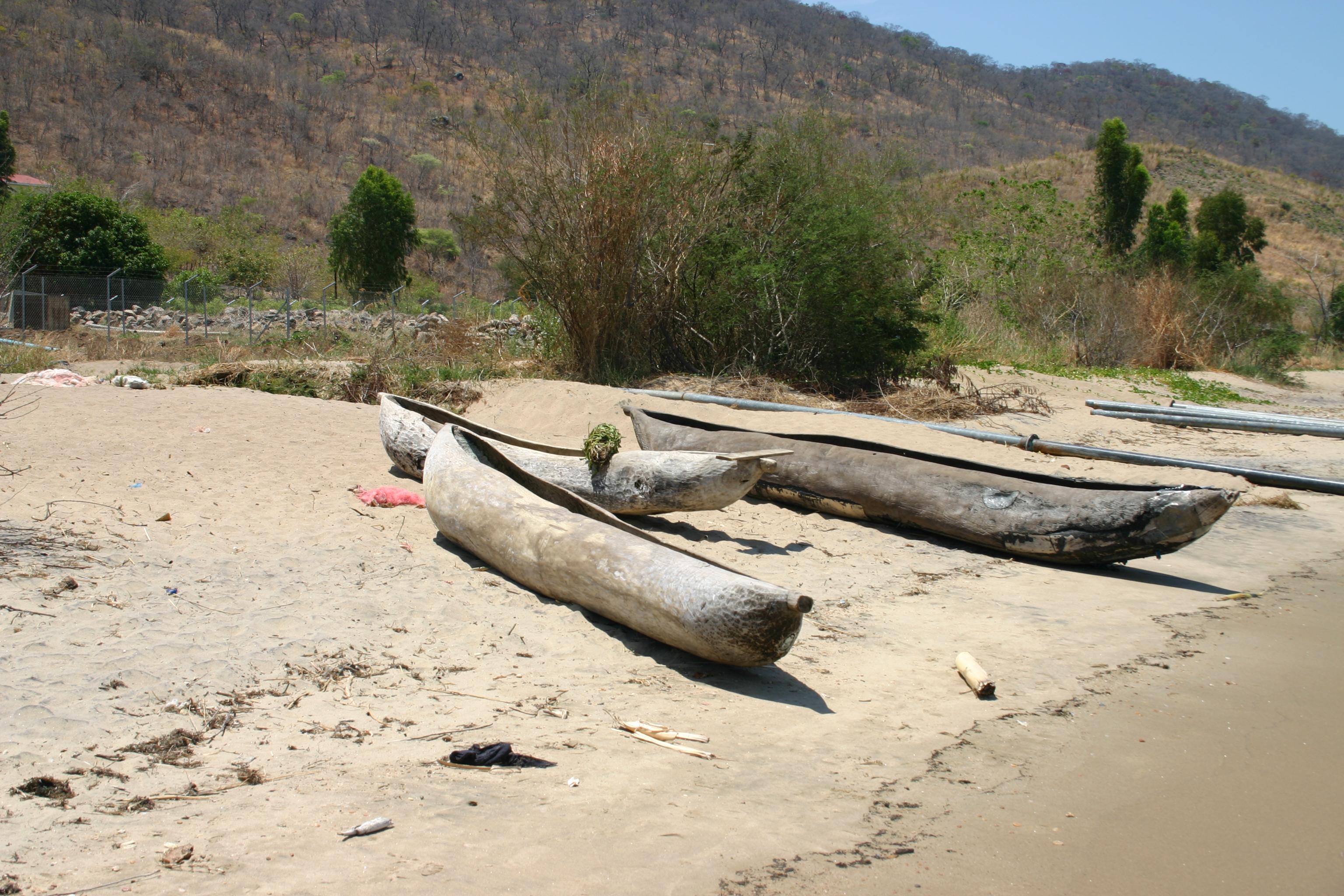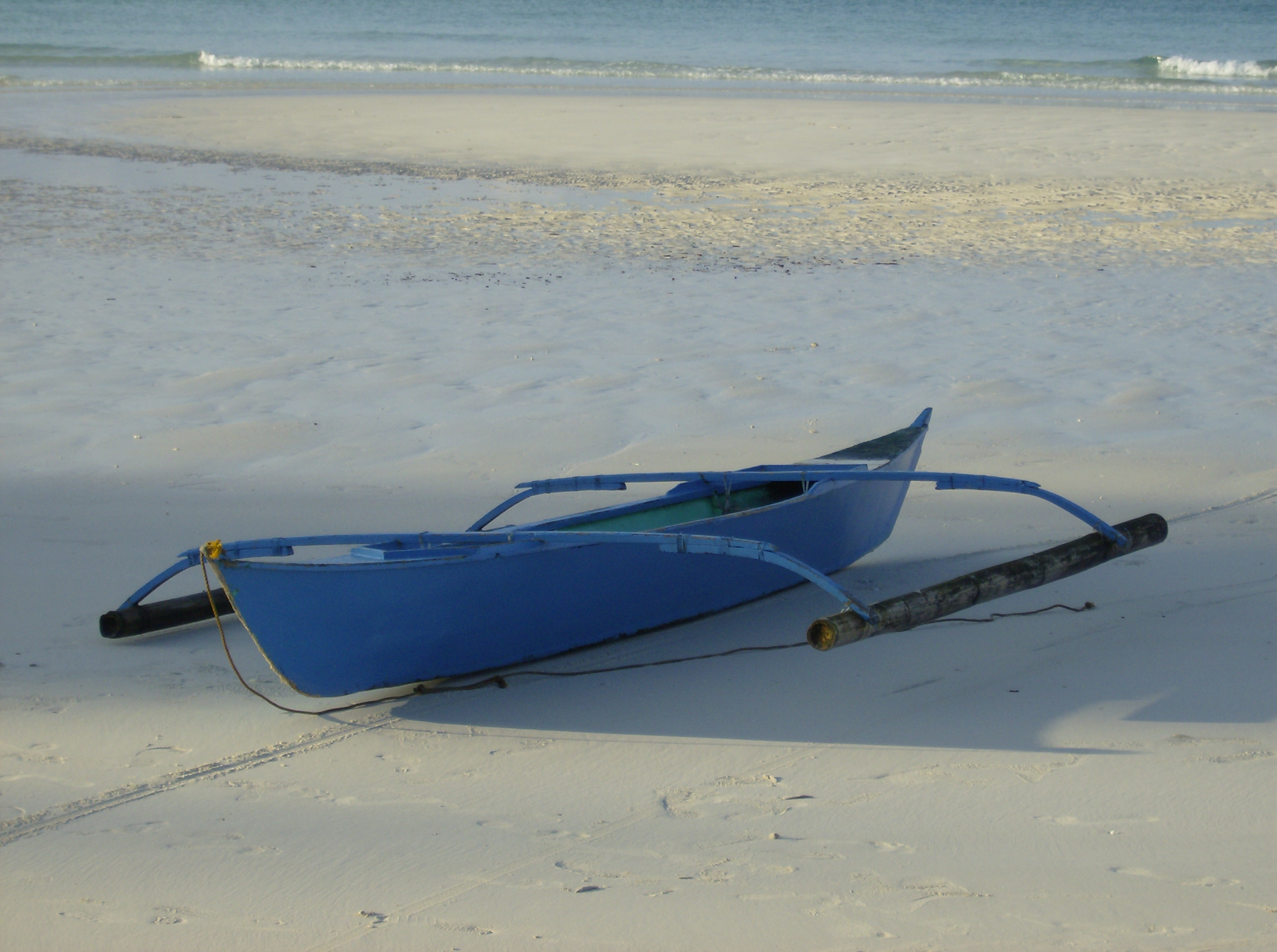|
Parao
Paraw (also spelled ''parao'') are various double outrigger sail boats in the Philippines. It is a general term (similar to the term '' bangka'') and thus can refer to a range of ship types, from small fishing canoes to large merchant lashed-lug plank boats ('' balangay'' or ''baloto'') with two outriggers (''katig'') propelled by sails (usually a large crab-claw sail opposite a smaller triangular foresail) Etymology The word ''paraw'' (also spelled ''parao'') is a cognate of the terms '' proa'' of the Pacific Islands, and ''perahu'' or ''prau'' of Malay- Indonesia. It refers to outrigger boats propelled by sails (''layag''). It is a type of '' bangka'', the wider term used for boats (with or without outriggers) in the Philippines. Characteristics The paraw has three major elements that make it a paraw: the ''bangka'' (canoe or main hull), the ''katig'' (outriggers), and the ''layag'' (sails). Motorized versions of bangkas (with outriggers) are commonly known as pump boa ... [...More Info...] [...Related Items...] OR: [Wikipedia] [Google] [Baidu] |
Parao Postcard From The Philippines (1940)
Paraw (also spelled ''parao'') are various double outrigger sail boats in the Philippines. It is a general term (similar to the term '' bangka'') and thus can refer to a range of ship types, from small fishing canoes to large merchant lashed-lug plank boats (''balangay'' or ''baloto'') with two outriggers (''katig'') propelled by sails (usually a large crab-claw sail opposite a smaller triangular foresail) Etymology The word ''paraw'' (also spelled ''parao'') is a cognate of the terms ''proa'' of the Pacific Islands, and ''perahu'' or ''prau'' of Malay-Indonesia. It refers to outrigger boats propelled by sails (''layag''). It is a type of '' bangka'', the wider term used for boats (with or without outriggers) in the Philippines. Characteristics The paraw has three major elements that make it a paraw: the ''bangka'' (canoe or main hull), the ''katig'' (outriggers), and the ''layag'' (sails). Motorized versions of bangkas (with outriggers) are commonly known as pump boats an ... [...More Info...] [...Related Items...] OR: [Wikipedia] [Google] [Baidu] |
Philippines
The Philippines (; fil, Pilipinas, links=no), officially the Republic of the Philippines ( fil, Republika ng Pilipinas, links=no), * bik, Republika kan Filipinas * ceb, Republika sa Pilipinas * cbk, República de Filipinas * hil, Republika sang Filipinas * ibg, Republika nat Filipinas * ilo, Republika ti Filipinas * ivv, Republika nu Filipinas * pam, Republika ning Filipinas * krj, Republika kang Pilipinas * mdh, Republika nu Pilipinas * mrw, Republika a Pilipinas * pag, Republika na Filipinas * xsb, Republika nin Pilipinas * sgd, Republika nan Pilipinas * tgl, Republika ng Pilipinas * tsg, Republika sin Pilipinas * war, Republika han Pilipinas * yka, Republika si Pilipinas In the recognized optional languages of the Philippines: * es, República de las Filipinas * ar, جمهورية الفلبين, Jumhūriyyat al-Filibbīn is an archipelagic state, archipelagic country in Southeast Asia. It is situated in the western Pacific Ocean and consists of aro ... [...More Info...] [...Related Items...] OR: [Wikipedia] [Google] [Baidu] |
Pump Boat
A pump boat (usually variation as ''pambot'' in local languages) is an outrigger canoe (') powered by a small gasoline or diesel engine. Smaller pump boats might be powered by the sort of small single-cylinder engine used to drive a water pump. Larger ones are often powered by recycled automobile engines. Pump boats are a utility boat in the Philippines, used for nearly everything from inter-island transportation to fishing and even the Philippine Coast Guard. Pump boats are also used by Sama-Bajau migrants and refugees in Sabah, Malaysia and eastern Indonesia (where it is known as ''pombot''). See also * Paraw * Basnigan * Lepa (ship) * Balangay * Traditional fishing boat Traditionally, many different kinds of boats have been used as fishing boats to catch fish in the sea, or on a lake or river. Even today, many traditional fishing boats are still in use. According to the United Nations Food and Agriculture Orga ... * List of boat types References Canoes Water ... [...More Info...] [...Related Items...] OR: [Wikipedia] [Google] [Baidu] |
Vinta
The vinta is a traditional outrigger boat from the Philippine island of Mindanao. The boats are made by Sama-Bajau, Tausug and Yakan peoples living in the Sulu Archipelago, Zamboanga peninsula, and southern Mindanao. Vinta are characterized by their colorful rectangular lug sails (''bukay'') and bifurcated prows and sterns, which resemble the gaping mouth of a crocodile. Vinta are used as fishing vessels, cargo ships, and houseboats. Smaller undecorated versions of the vinta used for fishing are known as tondaan. The name "vinta" is predominantly used in Zamboanga, Basilan, and other parts of mainland Mindanao. It is also known as pilang or pelang among the Sama-Bajau of the Tawi-Tawi islands; dapang or depang among the Tausug in Sulu; and balanda or binta in Yakan in Basilan. It can also be generically referred to as '' lepa-lepa'', ''sakayan'', or '' bangka'', which are native names for small outrigger vessels. Description The vinta has a deep and narrow hull formed ... [...More Info...] [...Related Items...] OR: [Wikipedia] [Google] [Baidu] |
Main Sail
A mainsail is a sail rigged on the main mast of a sailing vessel. * On a square rigged vessel, it is the lowest and largest sail on the main mast. * On a fore-and-aft rigged vessel, it is the sail rigged aft of the main mast. The sail's foot is normally attached to a boom. (In extremely heavy weather, the mainsail may be lowered, and a much smaller trysail hoisted in its place). Historical fore-and-aft rigs used a four-sided gaff rigged mainsail, sometimes setting a gaff topsail above it. Whereas once the mainsail was typically the largest sail, today the mainsail may be smaller than the jib or genoa; Prout catamarans typically have a mainmast stepped further aft than in a standard sloop, so that the mainsail is much smaller than the foresail. Bermuda rig The modern Bermuda rig uses a triangular mainsail aft of the mast, closely coordinated with a jib for sailing upwind. A large overlapping jib or genoa is often larger than the mainsail. In downwind conditions (with ... [...More Info...] [...Related Items...] OR: [Wikipedia] [Google] [Baidu] |
Baloto
A Balangay, or barangay is a type of lashed-lug boat built by joining planks edge-to-edge using pins, dowels, and fiber lashings. They are found throughout the Philippines and were used largely as trading ships up until the colonial era. The oldest known balangay are the Butuan boats, which have been carbon-dated to 320 AD and were recovered from several sites in Butuan, Agusan del Norte. Balangay were the first wooden watercraft excavated in Southeast Asia. Balangay are celebrated annually in the Balanghai Festival of Butuan City. Names ''Balangay'' was one of the Pigafetta's Dictionary#Some List of Words, first native words the Europeans learned in the Philippines. The Republic of Venice, Venetian chronicler Antonio Pigafetta, who was with Ferdinand Magellan when setting foot in the Philippines in 1521 called the native boats ''balangai'' or ''balanghai''. This word appears as either ''balangay'' or ''barangay'', with the same meaning, in all the major languages of the Phi ... [...More Info...] [...Related Items...] OR: [Wikipedia] [Google] [Baidu] |
Dugout Canoe
A dugout canoe or simply dugout is a boat made from a hollowed tree. Other names for this type of boat are logboat and monoxylon. ''Monoxylon'' (''μονόξυλον'') (pl: ''monoxyla'') is Greek – ''mono-'' (single) + '' ξύλον xylon'' (tree) – and is mostly used in classic Greek texts. In German, they are called Einbaum ("one tree" in English). Some, but not all, pirogues are also constructed in this manner. Dugouts are the oldest boat type archaeologists have found, dating back about 8,000 years to the Neolithic Stone Age. This is probably because they are made of massive pieces of wood, which tend to preserve better than others, such as bark canoes. Along with bark canoes and hide kayaks, dugouts were also used by Indigenous peoples of the Americas. Construction Construction of a dugout begins with the selection of a log of suitable dimensions. Sufficient wood must be removed to make the vessel relatively light in weight and buoyant, yet still strong enough ... [...More Info...] [...Related Items...] OR: [Wikipedia] [Google] [Baidu] |
Bangka (boat)
Bangka are various native watercraft of the Philippines. It originally referred to small double-outrigger dugout canoes used in rivers and shallow coastal waters, but since the 18th century, it has expanded to include larger lashed-lug ships, with or without outriggers. Though the term used is the same throughout the Philippines, "bangka" can refer to a very diverse range of boats specific to different regions. Bangka was also spelled as banca, panca, or panga ( m. banco, panco, pango) in Spanish. It is also known archaically as sakayan (also spelled sacayan). Etymology Bangka is derived from Proto-Malayo-Polynesian ''*baŋkaʔ'', with cognates including Kavalan ''bangka'', Mori ''bangka'', and Sumbawa ''bangka''. It is a doublet of two other protoforms referring to boats: Proto-Austronesian ''*qabaŋ'' and Proto-Central-Malayo-Polynesian ''*waŋka''. Ultimately from the Proto-Austronesian lexical root ''*baŋ'' for "boat". History Indigenous Philippine boats origin ... [...More Info...] [...Related Items...] OR: [Wikipedia] [Google] [Baidu] |
Plywood
Plywood is a material manufactured from thin layers or "plies" of wood veneer that are glued together with adjacent layers having their wood grain rotated up to 90 degrees to one another. It is an engineered wood from the family of manufactured boards which include medium-density fibreboard (MDF), oriented strand board (OSB) and particle board (chipboard). All plywoods bind resin and wood fibre sheets (cellulose cells are long, strong and thin) to form a composite material. This alternation of the grain is called ''cross-graining'' and has several important benefits: it reduces the tendency of wood to split when nailed at the edges; it reduces expansion and shrinkage, providing improved dimensional stability; and it makes the strength of the panel consistent across all directions. There is usually an odd number of plies, so that the sheet is balanced—this reduces warping. Because plywood is bonded with grains running against one another and with an odd number of composit ... [...More Info...] [...Related Items...] OR: [Wikipedia] [Google] [Baidu] |
Vitex Parviflora
''Vitex parviflora'' is a species of plant in the family Verbenaceae, also known as smallflower chastetree or the molave tree. The name "molave" is from Spanish, derived from ''mulawin'', the Tagalog word for the tree. It is also known as ''tugas'' in Visayan languages. It yields one of two woods from the same genus called molave wood, the other being '' Vitex cofassus''. It is a native species in Indonesia, Malaysia, and the Philippines. It can also be found in Central and South America, the Caribbean, Oceania, and Asia. It was reported to be an invasive species in Guam and Hawaii after it became naturalized in O’ahu and escaped from cultivation in Guam. In Cuba, it is also considered as a possibly invasive species due to naturalization. It is valued in the Philippines for its dense durable wood and was once used extensively in furniture, boats, utensils, and as construction material. The wood is also known to resist decay and termites. It became a protected species in the ... [...More Info...] [...Related Items...] OR: [Wikipedia] [Google] [Baidu] |
.jpg)

.jpg)



